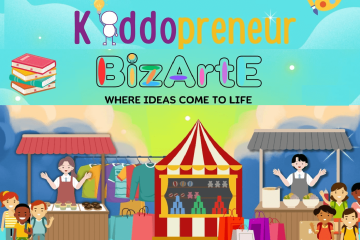Our identity is greatly shaped by our country’s history, culture and the performing arts. However, there is a need to raise the youth’s awareness of the viability of performing arts as a vocation in today’s age when entertainment is more synonymous with television or film. These offshoots in how today, fewer students are taking up formal education courses related to the performing arts. Sadly, some would even enter talent searches instead to gain a quick path to a celebrity which can diminish the quality of performance due to the lack of technical training.
How art contributes to multiple intelligences?

According to Howard Gardner’s theory of multiple intelligences, interest in the performing arts doesn’t fall under any one of the nine categories but it does help nurture all the intelligences within the spectrum. This means that the arts do help shape our spatial, naturalistic, musical, interpersonal, intrapersonal, and bodily-kinesthetic intelligence depending on individual preferences. At the same time, learning the many aspects of performing arts grooms our brains to master the various fields with ample support from teachers.
With this, experts like Gardner have concluded that any of the multiple intelligences can be utilized to create art or some form of it such as how poetry is to linguistics, painting is to spatial, and songwriting to musical intelligence.
The environment also has a lot to do with the development of multiple intelligences and their uses to the performing arts. As early as a child goes to school, he is exposed to the visual, musical, and bodily-kinesthetic arts among others, which can all trigger his fascination and further develop his interests in the performance. In fact, childhood is one of the best times for a student to explore his own fascinations about art. They are more curious about how things work and their brains process information so they can comprehend causes and effects while developing a more logical understanding of the arrangement. This includes interpreting art whether in visual form or performance.
Since the performing arts entail the use of voice, body, and the dexterity to convey artistic expression, many would assume that linguistic, musical and bodily-kinesthetic intelligence should be the most dominant in developing an artist. However, since Gardner’s theory was acknowledged by the academe years ago, the arts have been incorporated in every level of standard education which all more proves how it nurtures various aspects of a child’s educational progress.
The role of performing arts in a child’s development.

As most of us understand how art exudes aesthetic value for logical appreciation, it also serves as a social medium that lets children share their imagination and skill to others for merit or acknowledgment. Art also plays an important factor in how individuals come to understand themselves not only in terms of their strengths but in their weaknesses as well.
Considering how child development relates to the characteristic changes of an individual in terms of psychological, biological, and emotional aspects, their intelligence also helps shape their interests in various forms of art as they grow into adolescence.
Studies have proven that children have two distinct tendencies when it comes to appreciating performing arts. They enjoy concepts that are new to them which stimulates their interests but they also place importance in keeping old important ones that have helped shape their development. With this their multiple intelligences are geared to integrate both unknown (creative) and known (routine) concepts which leads them to experiment and develop their artistic preferences. This simply postulates that every child has art within him as he reaches higher levels of education and this helps hone his intelligence that contributes to how he handles real-life challenges psychologically and emotionally.
Undeniably, the performing arts benefit a child immensely in terms of learning new things and their general lives. The arts keep both sides of the human brain working even in the simplest tasks such as reading and solving math problems. Children make use of their senses to understand and appreciate performances while promoting their manner of expression and self-esteem.

Aside from helping them develop their motor skills and sharpen their attention to detail, an appreciation of the performing arts opens up their mind to plausibilities and encourages them to ask questions that further cultures their minds. It hones their creative processes and helps them solve problems and lets them better understand the world around them.
Multiple intelligence integrates with their appreciation of the performing arts which results in significant triumphs in their learning processes. And as others recognize a child’s brand or knowledge of a particular aspect of the performing arts, it gives him a sense of accomplishment and validation and empowers them all the more.
Needless to say, a child’s multiple intelligences are definitely developed further by integrating performing arts concepts into their learning processes and helps them know themselves better, points them out to which field they can excel the most, and equip them with the proper tools to handle every challenge in life.
References:
- https://www.hepg.org/hel-home/issues/15_6/helarticle/the-happy-meeting-of-multiple-intelligences-and-th
- https://www.canr.msu.edu/news/the_art_of_creating_why_art_is_important_for_early_childhood_development
Learning Links promotes meaningful education and personal growth to help find what students really want for their careers and lives!
Click on the button below to find out how we make great education possible.



